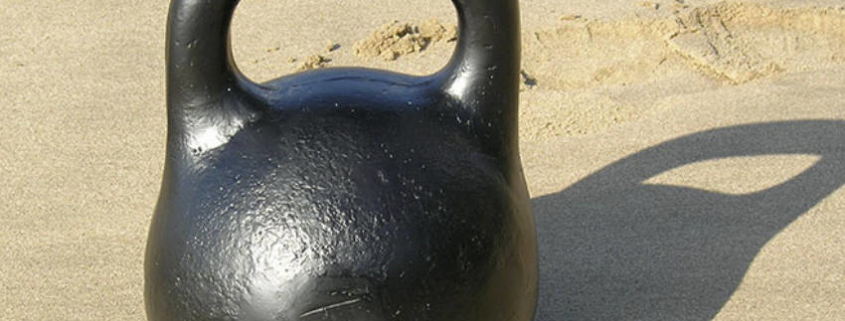Kettlebells
Kettlebells, cast-iron weights that look like cannonballs with handles, have grown in popularity, and many gyms, trainers and coaches have jumped on the kettlebell bandwagon. A popular kettlebell exercise is the single-arm swing. A combination of a squat and an arm swing, it is one of the trickiest kettlebell exercises to do correctly. Common sense suggests that swinging the kettlebell back and whipping it straight overhead in one clean movement is a recipe for injury. Kettlebell instruction methodology suggests that concern for safety may be understood, yet explosive movements with weights, which increase that risk greatly, are still endorsed.
The kettlebell swing shouldn’t be performed until the barbell deadlift is mastered. The barbell deadlift not to be confused with the stiff legged deadlift, is essential for the safety and integrity of the lower back, and indeed your whole spine, when lifting any weight. Ironically, I rarely see this fundamentally important movement performed correctly in the gym.
Explosive/ballistic lifting kettlebell exercises should be treated with extreme caution, and are not suitable for the beginner at exercise, or those returning to exercise after inactivity. Using kettlebells correctly and safely requires a high level of technical skill and proper instruction. Only those who are professional athletes, or who have a few years of weight-training experience with free weights and have trained their muscles to withstand repeated shock of a ballistic nature, should even consider using them.
Always question why you are doing a particular exercise (even if you are with a personal trainer or biokineticist) and determine its risk vs its benefit. Rather be safe than sorry. If you have a pre-existing neck, shoulder, back or postural issue, arthritis or a hernia, kettlebells are NOT for you. It’s also a potential hazard to your rotator cuff / shoulder muscles, lower back discs and joints as well as forearm and elbow tendons. Injuries occur when forces of weight and momentum exceed the integrity of the tendons, muscles, ligaments and joints. This can occur at any moment with a high force, or more gradually with overuse injuries, and too much training.
This probability increases dramatically as the speed of movement increases when jerking, dropping or heaving a weight, whether heavy or light. So, the slower a weight is moved and the more control a person has with a weight, and as long as the weight is not a maximum lift, but a sensible weight, the less risk there will be of incurring an injury.
Always lift on a count of one second and lower on a count of two seconds. If you are serious about weight training, this controlled movement will increase your gains considerably, and reduce the chance of injury.
Get qualified instruction from someone who knows how to use kettlebells. You may get the results you want and save your body from potential injury.
View a list of common complains that Osteopathy can assist with
Discovery the benefits of Osteopathy
- What is Osteopathy?
- Adult health issues
- Babies and Children
- During and after pregnancy
- Common Complaints
- Testimonials
- Sports Injuries
- Genral Osteopathy FAQs
- The Science & Reasearch



